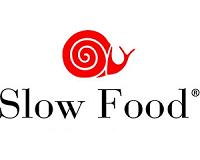 |
Abbiategrasso, Italy (AFP) Sept 28, 2010 Just half an hour's drive from Milan, Italy's fast-moving capital of finance, fashion and design, Abbiategrasso relishes its "slow" identity. Signs marking the town limits bear the symbol of an orange snail with houses perched on its shell: proud symbol of Abbiategrasso's link to Cittaslow, an offshoot of the quarter-century old Slow Food movement. "Cittaslow wants to bring humans back to a calmer kind of life, one that is also more human," Roberto Albetti, the town's centre-right mayor, told AFP. "It's not about going backwards in terms of progress but about agreeing to sacrifice a little comfort in order to have better quality goods." The Cittaslow project -- which means slow city -- involves more than 140 towns of fewer than 50,000 inhabitants in 20 countries including Germany, United States and South Korea. About half are in Italy, where Slow Food was born first as a protest against fast-food culture, before blossoming into an international movement devoted to "good, clean and fair" food. Cittaslow's goal is to foster a sense of "identity and community spirit in the face of the modern world" through a range of environmental social, urban and gastronomical policies, the organisation said in a statement. Cittaslow says it is not about rowing against globalisation, "Learning to take what nature gives us, creating moments of silence, and developing our own humanity. That's the challenge," Albetti said. For Abbiategrasso, which lies just 20 kilometres (12 miles) west of Milan, slow-living begins with transport. The town centre is closed off to cars during the weekend, and even during the week the streets are packed with bicycles. While Italian cities are notoriously unfriendly to bicycles, Abbiategrasso officials once counted 9,000 bikes cruising the streets in a single morning -- in a town of just 32,000. "It's like heaven here. The town is calm and beautiful. I couldn't live in Milan, it's too loud, there is too much traffic," said Sebastiano Pettinato, a retiree. And citizens seem to approve of the slow lifestyle, so much so that many a Milanese have decided to move here: Abbiategrasso's population grew from 28,000 inhabitants in the past decade. "I prefer smaller cities, we help each other out, there are more human relationships. I would never live in Milan or Rome, where you don't even know whether you can trust your neighbor," said Lara Manzoni, a teacher. While the financial crisis hit Abbiategrasso's businesses hard, "being a slow city can help us develop tourism," said Valter Bertani, the mayor's deputy. Slow-living "does not mean reining in economic development," Albetti said. Abbiategrasso actively promotes its local delicacies in Italy and around the world, helping small businesses like the Gorgonzola cheese-maker owned by the family of Marco Gelmini, employing about 40 people. "It's very important for us, because we have a niche product that needs to be promoted outside the country and the European Union, to win market share while safeguarding the product's artisanal nature," Gelmini said. Events promote locally-grown food and other produce in city squares, and the town hosts an annual international food fair called Abbiategusto -- which translates as "have some taste". "I think this message will eventually touch larger cities as well," said Albetti. "Why can't we apply the concept of taking back the city from cars and for humans in the frenzy of Milan, Paris or Vienna?"
Share This Article With Planet Earth
Related Links Farming Today - Suppliers and Technology
 At snail's pace, nudging the world towards better food
At snail's pace, nudging the world towards better foodRome (AFP) Sept 28, 2010 For more than two decades, Carlo Petrini has been gently nudging the world towards "good, clean and fair" food, signing up 100,000 people in 163 countries to his Slow Food movement. "Philosophically, finding slowness again is essential. We need to take a small, homeopathic dose of it every day, to come back to a life rhythm that is more bearable," the 61-year-old Italian told AFP in an inter ... read more |
|
| The content herein, unless otherwise known to be public domain, are Copyright 1995-2010 - SpaceDaily. AFP and UPI Wire Stories are copyright Agence France-Presse and United Press International. ESA Portal Reports are copyright European Space Agency. All NASA sourced material is public domain. Additional copyrights may apply in whole or part to other bona fide parties. Advertising does not imply endorsement,agreement or approval of any opinions, statements or information provided by SpaceDaily on any Web page published or hosted by SpaceDaily. Privacy Statement |